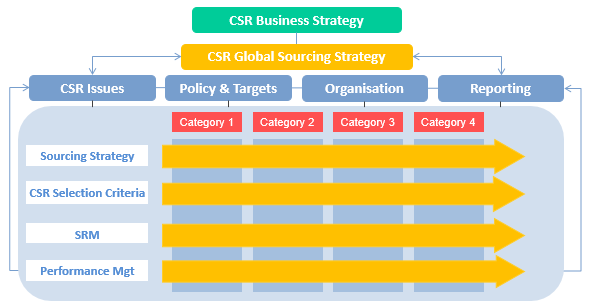Global Sourcing Capabilities Part 2
Global Sourcing Capabilities Part 2 – In this four-part series, we examine eight-dimensional capabilities that will help you overcome the myths surrounding global sourcing.
In today’s post, we will focus on the dimension of corporate social responsibility.
(In part 1 we addressed cost and quality.)
Dimension #3: CSR
CSR is important in global sourcing in that it helps drive and support:
- Business Principles & Values
- Business Benefits realised by improving environmental and working conditions (which improves performance), lowering energy cost, reducing waste, increasing productivity, improving safety, decreasing turnover, and increasing training
- Brand Risk Management as companies cannot rely on regulation and enforcement of environmental and labour laws in LCCs
The business case for a strategic approach to CSR in global sourcing has come to light in high profile businesses such as Ikea, who dismissed two Russian employees for allowing a supplier to pay a bribe. Further, in a recent CIPS report on Africa, bribery was seen as just a part of doing business. From the media, we often get the impression that most multinational corporations have already adopted CSR as an integral part of their LCCS strategies. In reality, only a small percentage of the world’s international corporations, and their suppliers have seriously embraced CSR.
Those that have, typically implement a code of conduct for their suppliers. For example, Apple recently highlighted serious non-compliances with suppliers in countries such as China and Taiwan during a recent audit. The violations included employment of underage workers, improper hazardous waste disposal, false records and suppliers signing contracts with uncertified vendors.
Unilever describes CSR as the impact of the business on society. When taken broadly, this definition clearly allows scope for determination of whether a policy is a power for good or not, within the local context by conducting an impact assessment. When backed up by an ongoing program of continuous improvement, this can prove to be a powerful tool that can support the necessary response to the media should unintended consequences arise.
Implementing a CSR Sourcing Strategy – a Category Driven Approach:
The governance model shown starts at the organisation’s overall strategic level to ensure CSR objectives and targets are consistent with the business’ overall goals.
The CSR issues should feed into the overall sourcing strategy through detailed analysis (processes, spend, supply base, and feedback from the field and SRM initiatives for all categories). This helps establish both a baseline on a category basis and a holistic view of the global sourcing environment. The baseline then serves as the basis to prioritise future initiatives and also to measure their success.
When getting started, it is best to focus on categories that have low complexity and to set achievable targets to establish quick wins. Ensure that the approach is cross-functional and that lessons learned are fed back into future initiatives.
Nuff said …
In part 2 we look at CSR

